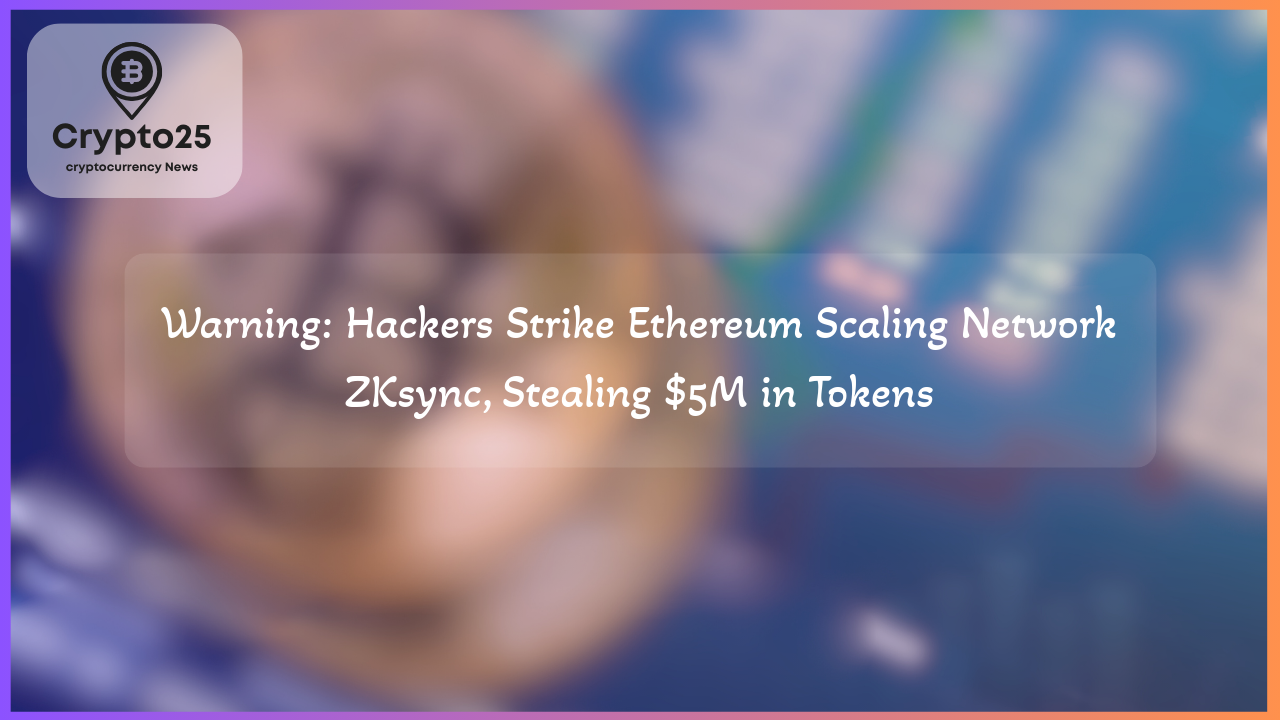
The crypto world has been shaken yet again as ZKsync, a leading Ethereum layer-2 scaling protocol, suffered a security breach, resulting in the theft of approximately $5 million in ZK tokens. The incident was traced back to a compromised administration account linked to a recent airdrop. While no user funds were impacted, the hack highlights growing concerns over the security vulnerabilities in decentralized systems.
## ZKsync Hack: What Happened to the $5 Million?
ZKsync, popular for its scalability solutions for Ethereum, confirmed the breach, attributing it to a compromised administrative key. The hackers managed to exploit the unclaimed tokens from a recent airdrop, leveraging the breach to mint new ZK tokens. As a result, the value of ZK fell by 8%, dropping to $0.04 before a slight recovery to $0.05.
An official statement on the incident reassured users that core protocol security remained intact. “All user funds are safe and have never been at risk,” ZKsync said on social media. However, the attack has raised questions about the robustness of airdrop contracts in the ecosystem, as well as the susceptibility of administrative controls to exploitation.
## Understanding Ethereum Layer-2 Protocols and Their Security Challenges
Layer-2 blockchains like ZKsync are designed to enhance Ethereum’s scalability while reducing costs by processing transactions off-chain. These networks are integral to the growing adoption of decentralized finance (DeFi) platforms. However, their increasing complexity also creates opportunities for determined bad actors.
Hackers behind the ZKsync breach targeted the contract handling the airdrop—a common method of incentivizing engagement in crypto projects. Airdrops, while effective for fostering community participation, often become attractive targets for cybercriminals. Notably, ZKsync described the issue as “an isolated incident caused by a compromised key.” Nonetheless, it underscores the broader industry challenge of ensuring airtight security across every layer of blockchain architecture.
The incident is not without precedent. A similar hack earlier this year saw Bybit, a centralized crypto exchange, lose $1.4 billion—the largest crypto theft to date. As the industry grows, the stakes continue to rise, and so do the demands for robust security solutions.
## Crypto Industry Faces Mounting Cybersecurity Breaches
The ZKsync hack adds to a staggering series of cyberattacks in 2025. According to blockchain security firm Immunefi, hackers stole $1.6 billion in the first two months of the year, nearing last year’s total of $2.2 billion. While decentralized platforms previously bore the brunt of such attacks, centralized exchanges are now also high-profile targets, as evidenced by the Bybit hack.
In many cases, stolen digital assets are quickly laundered through decentralized exchanges, complicating recovery efforts. This trend not only highlights the ingenuity of cybercriminals but also reveals gaps in the current security mechanisms of both centralized and decentralized platforms.
To mitigate these challenges, blockchain projects must not only audit their codes rigorously but also secure administrative accounts and closely monitor transaction anomalies. Education and preventative measures will be vital to reducing the frequency and impact of such breaches.
| Incident | Details |
|---|---|
| ZKsync Hack | $5 million stolen via compromised administrative key |
| Bybit Hack | $1.4 billion stolen in February 2025 |
| Total Crypto Hacks in 2025 | $1.6 billion in the first two months |
## Building Trust Amid Rising Crypto Exploits
As hacks become a pressing concern, the crypto community is forced to confront critical weaknesses. The ZKsync case serves as a grim reminder of how one vulnerability can lead to significant financial and reputational losses. For investors and developers, incidents like these emphasize the importance of prioritizing security in every phase of project development.
Moreover, to earn public trust, blockchain projects must not only respond swiftly to breaches but also enhance transparency and communication. ZKsync’s promise to deliver detailed updates on their investigation is a step in the right direction, albeit long overdue for an industry grappling with security upheavals. By acting decisively and adopting stronger safeguards, crypto ecosystems can continue to innovate without unduly risking their integrity.
While breaches are inevitable in such a dynamic space, they can serve as pivotal learning moments for building resilience. The path forward requires a proactive stance—combining technological advancements with a robust commitment to security compliance. In doing so, both users and projects can mitigate risks while driving the long-term growth of blockchain technology.
